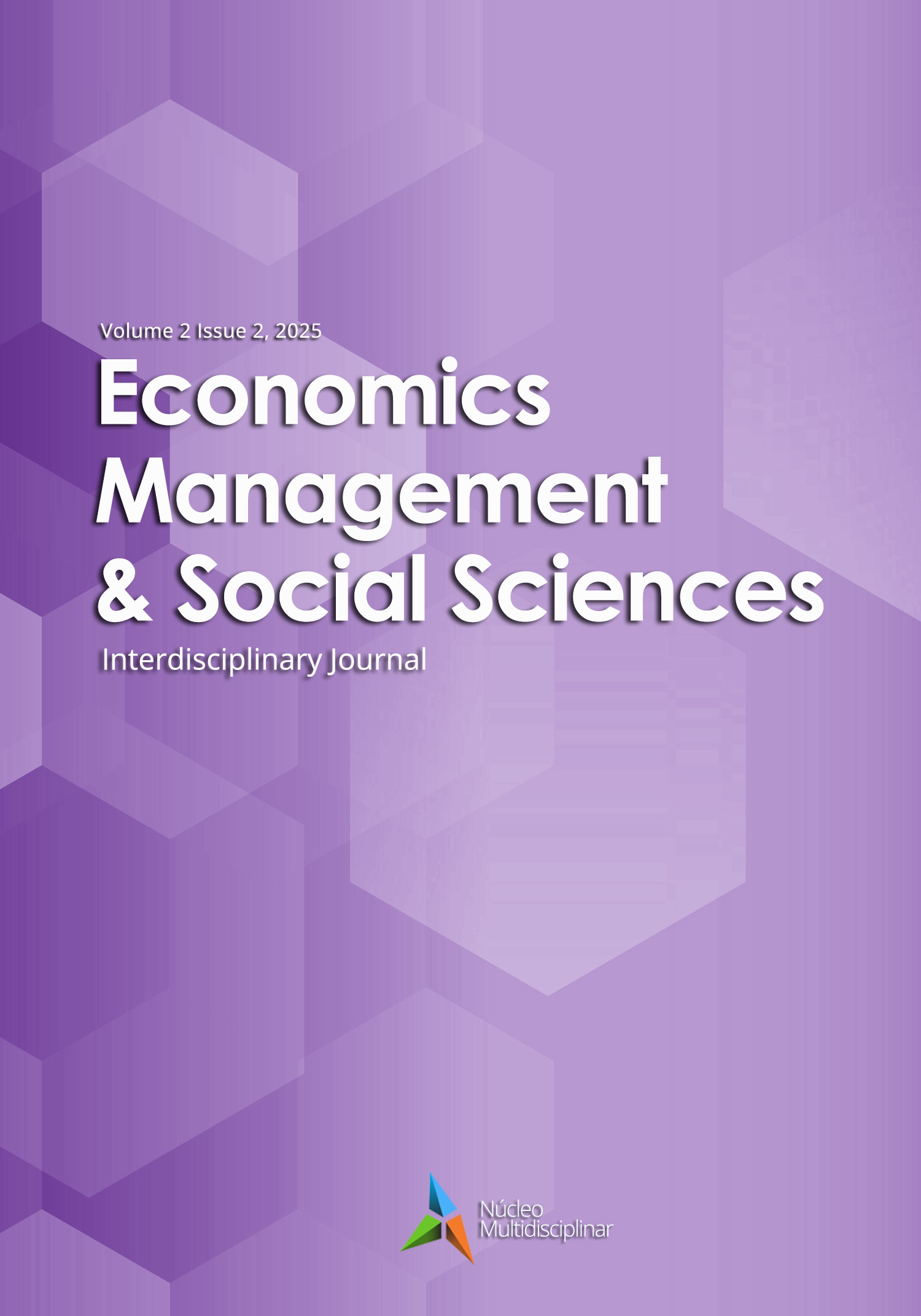L’impact de l’innovation manageriale sur l’amelioration de la performance de l’action publique
Cas d’un Departement Ministeriel
DOI :
https://doi.org/10.23882/emss25159Mots-clés :
l’innovation managériale, performance de l’action publique, étude de casRésumé
L’étude explore l'impact de l'innovation managériale sur la performance de l’action publique, en se concentrant sur un département ministériel en cours de digitalisation de ses processus. La problématique soulevée met l’accent sur l’efficacité des innovations managériales dans un environnement public, marqué par la bureaucratie et les contraintes budgétaires. Basée sur une approche qualitative a visé exploratoire, des entretiens avec des responsables portant sur la caractérisation de l'innovation managériale, les facteurs influençant son adoption, et l'impact de ces facteurs sur la performance de l’action publique ont été réalisés. Les résultats montrent que l'innovation managériale dans le secteur public est multifacette, impliquant des changements organisationnels, culturels et comportementaux, mais sa mise en œuvre reste souvent entravée par des facteurs internes comme la bureaucratie. Les apports de la recherche soulignent la nécessité d’une approche plus agile et collaborative, tout en suggérant que l’efficacité des innovations dépend de leur bonne implantation et de leur alignement avec les objectifs organisationnels.
Références
Andersen, O. J. (2008). A Bottom-Up Perspective on Innovations: Mobilizing Knowledge and Social Capital Through Innovative Processes of Bricolage, Administration & Society, vol. 40, n° 1, pp. 54-78.
Autissier. D., Johson, K. J & Moulot, J-M. (2016), « L’innovation managériale rupture ou évolution du management », Questions de management, vol 2 n°13, I.M.C.F., pp. 25-33.
Bartoli, A. & Blatrix, C. (2017), Management dans les organisations publiques, 4 e édition : défis et logiques d’actions, Paris, Dunod.
Bernier, L., et T. Hafsi (2007). The changing nature of public entrepreneurship, Public Administration Review, vol. 67, n° 3, pp. 488-503.
Bhatti, Y., A. L. Olsen et L. Holm Pedersen (2011). Administrative Professionals and the Diffusion of Innovations: the Case of Citizen Service Centres, Public Administration, vol. 89, n° 2, pp. 577-594.
Birkinshaw J., Mol M.J. (2006). How management innovation happens, MIT Sloan Management Review, vol. 47, n° 4, pp. 81-88.
Bonnenfant, G. & Berardi, C. (2012), Le management public, pivot de la modernisation de l’Etat , L’expansion Management Review, vol 2 n°145, L’express, pp.22-31.
Carassus, D., Marin, P., Christophe, M., Christophe, F., (2016), Les types d’innovations managériales et leurs facteurs clés de succès dans le secteur public local , Revue de Gestionnaire Public.
Chambers, D. A., R. E. Glasgow et K. C. Stange (2013). The dynamic Sustainability Framework: Addressing the Paradox of Sustainment Amid Ongoing Change, Implementation Science, vol. 8, n°1.
Considine, M. et J. M. Lewis (2007). Innovation and Innovators Inside Government: From Institutions to Networks, Governance: An International Journal of Policy, Administration and Institutions, vol. 20, n° 4, pp. 581-607.
Damanpour F et Schneider, .M (2008). Characteristics of Innovation and Innovation Adoption in Public Organizations: Assessing the Role of Managers, Journal of Public Administration Research and Theory vol 19 n°3, pp : 495-522.
Damanpour, .F ; R. M. Walker et C. N. Avellaneda (2009). Combinative Effects of Innovation Types and Organizational Performance: A Longitudinal Study of Service Organizations. Journal of Management Studies vol 46, n°4 pp: 650-675.
DiMaggio, P. J. et W. W. Powell (1983), The iron cage revisited: institutional isomorphism and collective rationality in organizational fields , American Sociological review, vol. 48, n° 2, pp. 147-160.
Fitzgerald, L. et autres (2002), Interlocking Interactions, the Diffusion of Innovations in Health Care», Human Relations, vol. 55, n° 12, pp. 1429-1449.
Halvorsen, T. et autres (2005). On the Differences Between Public and Private Sector Innovation , Communication présentée à NIFU STEP, Oslo, Publin report n° D9.
Hamel, G. & Breen, G. ( 2007), The future of management, Harvard Business School Press, Boston, version française, Edition Vuibert, Paris, 200.
Hamel, G., (2009), Management innovation, Leadership excellence.
Hartley, J. (2005). Innovation in Governance and Public Services: Past and Present, Public Money & Management, vol. 25, n°1, pp. 27-34.
Le Roy, F., Robert, M & Giuliani, P. (2013), L’innovation managériale. Généalogie, défis et perspectives, Revue Française de Gestion, vol 6, n°235, Lavoisier, pp.77-90.
Lockett, A. et autres (2012). The Role of Institutional Entrepreneurs in Reforming Healthcare , Social Science & Medecine, vol. 74, n° 3, pp. 356-363.
Lozeau, D, A. Langley, et J.-L. Denis, (2002). The Corruption of Managerial Techniques by Organizations, Human Relations, vol. 55, n° 5, pp. 537-564.
Miles, M. B., & Huberman, M.A. (2003). Analyse des données qualitatives. Deuxième édition, Paris De Boeck.
Osborne, S. P. et K. Brown (2005). Managing Change and Innovation in Public Service Organizations, New York, Routledge Taylor & Francis Group.
Piening E. P. (2011). Insights into the Process Dynamics of Innovation Implementation », Public Management Review, vol. 13, n° 1, pp. 127-157.
Pope, C. et autres (2006). Lost in Translation: a Multi-Level Case Study of the Metamorphosis of Meanings and Action in Public Sector Organizational Innovation, Public Administration, vol. 84, n°1, pp. 59-79.
Rispal, M.H., (2002). La méthode des cas, application à la recherche en gestion. De Boeck supérieur.
Tat-Kei Ho, A. et A. Ya Ni (2004). Explaining the Adoption of E-Government Features: A case Study of lowa County Treasures Offices, American Review of Public Administration, vol. 34, n° 2, pp. 164-180.
Verhoest, K, B. Verschuere et G. Bouckaert (2007). Pressure, Legitimacy, and Innovation Behavior by Public Organizations, Governance: An International Journal of Policy, Administration and Institutions, vol. 20, n° 3, pp. 469-497.
Walker R. M. (2006). Innovation Type and Diffusion: an Empirical Analysis of Local Government, Public Administration, vol. 84, n° 2, pp. 311-335.
Walker, R. M. (2012). Internal and External Antecedents of Process Innovation: A Review and Extension, Communication présentée à international Research Society for Public Management XVI Conference, Rome, Italie, Avril.
Walker, R. M., F. Damanpour et C. Devece, (2010). Management innovation and organizational performance: the mediating effect of performance management, Journal of Public Administration Research and Theory, vol. 21, n° 4, pp. 367-386.
Yin, R. K., (1994). Case Study Research: Design and methods Second. Sages publications.
Téléchargements
Publiée
Comment citer
Numéro
Rubrique
Licence
(c) Tous droits réservés Ouadie EL HAOUARY, Yousra BEY 2025

Ce travail est disponible sous licence Creative Commons Attribution - Pas d’Utilisation Commerciale 4.0 International.







